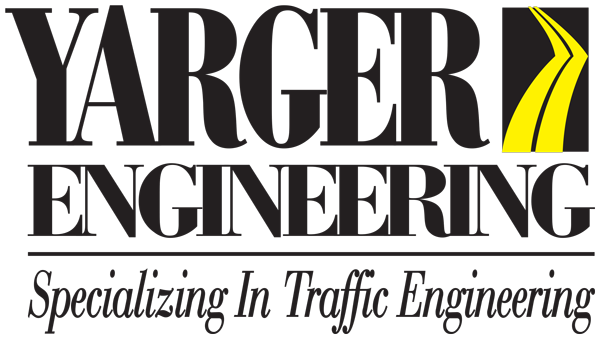Signal Timing Projects - Yarger Engineering, Inc. 317-475-1100 Email Us
Signal Timing Project Descriptions
The following are descriptions of Yarger Engineering, Inc.'s projects.
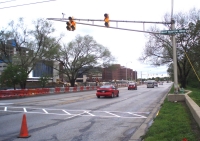 Signal Timings, Eskenazi Hospital, 10th Street at Riley Hospital Drive, Indianapolis, Marion County, IN
Signal Timings, Eskenazi Hospital, 10th Street at Riley Hospital Drive, Indianapolis, Marion County, IN
Yarger Engineering provided, installed and fine-tuned signal timing for a portion of 10th Street while the Eskenazi Hospital was under construction and traffic in the area was rerouted to a temporary signal at Riley Hospital Drive.
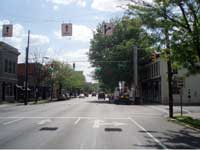 Signal Timings, Spring, Market and Elm Streets, New Albany, Floyd County, IN
Signal Timings, Spring, Market and Elm Streets, New Albany, Floyd County, IN
The City of New Albany received ARRA (Stimulus) funds to modernize their old pretimed signals in downtown to coordinated fully actuated signals. Yarger Engineering, Inc. developed and installed the signal timings. They also participated in the pre-final inspection due to unique knowledge of traffic signal design and operation.
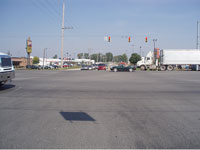 Signal Study, Timings, and Design, Oak Drive, Plymouth, Marshall County, IN
Signal Study, Timings, and Design, Oak Drive, Plymouth, Marshall County, IN
The City of Plymouth reconstructed Oak Drive north of US 30. Yarger Engineering, Inc. analyzed signal warrants and the design alternatives, prepare the signals timings, and develop the signal plans.
Signal Timings, Johnson Street, Elkhart, Elkhart County, Indiana
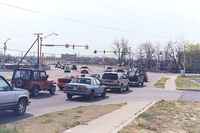 In 1997, Yarger Engineering and Traffic Engineering Consultants performed a joint project to retime traffic signals along Johnson Street in Elkhart, Indiana. The signal system consisted of six signalized intersections. Johnson Street provides the bridge across the St. Joseph River and is a major collector in Elkhart. Several of the intersections were experiencing extremely high delays before the project.
In 1997, Yarger Engineering and Traffic Engineering Consultants performed a joint project to retime traffic signals along Johnson Street in Elkhart, Indiana. The signal system consisted of six signalized intersections. Johnson Street provides the bridge across the St. Joseph River and is a major collector in Elkhart. Several of the intersections were experiencing extremely high delays before the project.
Traffic Engineering Consultants gathered the data and performed isolated traffic signal capacity analyses. Yarger Engineering optimized the signal system timings, and then installed the traffic signal timings into controllers and made field adjustments. Yarger Engineering also troubleshot the existing traffic signal equipment as they related to the new timings.
Since the initial project, Yarger Engineering has returned to Elkhart several times to update and maintain the traffic signal timings. New traffic signal controllers were installed in September 1999 and Yarger Engineering adjusted the traffic signal timings to reflect the new equipment and changes in traffic volumes. In 2001, a nearby city street was closed and the traffic rerouted to Johnson Street. Yarger Engineering developed and installed traffic signal timings for the detours. In 2004 Yarger Engineering provided trouble shooting services for a malfunctioning traffic signal system.
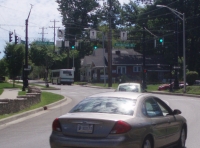 Traffic Signal Study, Signal Timings and Design, Atwater Avenue at Henderson Street, Bloomington, Monroe County, IN
Traffic Signal Study, Signal Timings and Design, Atwater Avenue at Henderson Street, Bloomington, Monroe County, IN
The City of Bloomington built an intersection improvement project at Atwater Avenue and Henderson Street. Yarger Engineering, Inc. prepared a traffic study, developed signal timings and designed the traffic signal.
 Traffic Impact Study, Signal Design, Signal Timings, and Construction Engineering and Inspection, Pilot Travel Centers, LLC, CR 400 North at Michigan Road/CR 200 West Shelbyville, Shelby County, IN
Traffic Impact Study, Signal Design, Signal Timings, and Construction Engineering and Inspection, Pilot Travel Centers, LLC, CR 400 North at Michigan Road/CR 200 West Shelbyville, Shelby County, IN
Pilot Travel Centers, LLC developed a truck stop with a McDonald's restaurant in the southeast corner of CR 400 North at Michigan Road/CR 200 West, just off of I-74 in Shelbyville. Yarger Engineering, Inc. prepared a traffic impact study, designed a traffic signal, developed and installed signal timings, and provided construction engineering for the signal. The traffic impact study included several future offsite developments, four driveways to the truck stop and one public intersection.
Signal Design, Construction Engineering and Signal Timings, Hart Street, Vincennes, Knox County, Indiana
Yarger Engineering, Inc. designed a traffic signal for the intersection of Hart Street at Kimmel Road in Vincennes. They also assisted the City in construction and provided signal timings.
 Progression Study, SR 32 at Carey Road/Grassy Branch Road, Westfield, Hamilton County, IN
Progression Study, SR 32 at Carey Road/Grassy Branch Road, Westfield, Hamilton County, IN
Traffic Engineering, Inc. prepared a traffic impact study for a shopping center on the south side of SR 32 in Westfield. Yarger Engineering, Inc. prepared the progression study portion of the traffic impact study.
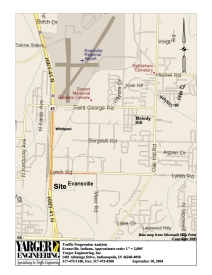 Progression Study, US 41 at Lynch Road, Evansville, Vanderburgh County, Indiana
Progression Study, US 41 at Lynch Road, Evansville, Vanderburgh County, Indiana
Yarger Engineering was hired as a subconsultant to prepare a traffic signal progression analysis study for submittal to INDOT. Yarger Engineering used traffic volumes developed by the prime consultant for six intersections with and without the development and with a proposed widening of US 41. Yarger Engineering used Synchro for the analyses and prepared a written report for inclusion in the prime consultant's report.
SR 1 at I-69 Progression Study, Fort Wayne, Allen County, Indiana
As part of a traffic impact study, Yarger Engineering, Inc. was asked to perform a progression study of SR 1 using PASSER software. The study determined the optimal coordination patterns and demonstrated that the coordination of SR 1 would not be severely disrupted by an additional signal in the system. Yarger Engineering, Inc. also pointed out that PASSER, while providing very good mainline progression, was actually not optimizing the system. Because of the high turning volumes, PASSER's assumption that the mainline progression would progress the majority of the traffic was incorrect. The mainline only accounted for 40% of the traffic at the site driveway while the side streets (I-69 off ramps) accounted for 60% of the traffic. Yarger Engineering, Inc. then determined the necessary offsets to progress the majority of the traffic. By understanding the way that PASSER works and having hands-on experience in traffic signal operations, Yarger Engineering, Inc. was able to find the best solution for the project.
Fully Actuated Versus Semi-Actuated Signal Systems - A Research Paper
(Fully Actuated Versus Semi-Actuated Signal Systems - PDF 160K) (Get the free Adobe Acrobat Reader)
In 1993, Mr. Yarger personally took on a research project into the operation of traffic signal systems using HCS, TRANSYT-7F, and Traf-NETSIM. The purpose was to answer design issues about whether fully actuated signal systems performed better or worse than semi-actuated systems. When confronted with differing opinions as well as his opinion, he did a literature search, but found that there was no factually based information on the topic. His own experience was that fully actuated traffic signal systems were extremely rare in Indiana and that most people believed in order to coordinate fully actuated signals they had to be placed in semi-actuated mode. Having successfully designed, installed, and operated fully actuated systems without going to semi-actuate mode, he knew it was not only possible, but also practical.
For this research, Mr. Yarger selected HCS and TRANSYT-7F for some of the initial optimizations and Traf-NETSIM as the primary analysis tool. The research concentrated on arterial systems, but grew in scope to include pretimed traffic signals and grid patterned street systems. He put in approximately 400 hours of his own time doing the research. In the end, he determined that not only did fully actuated signal systems outperform semi-actuated system, but pretimed systems also out performed semi-actuated systems when not hampered by pedestrians.
Mr. Yarger submitted his paper to ITE as a presentation topic and it was accepted. In September 1993, Mr. Yarger gave the presentation to an international group of traffic engineers at the 1993 ITE Annual Meeting in The Hague, Netherlands. Later that year, he presented it to a national corporate meeting of traffic engineers from HNTB. In 1995, Mr. Yarger also presented the paper at the ITE District III annual meeting.
This project demonstrates Mr. Yarger's familiarity with traffic signal systems, which he has acquired through years of study, research, operation, planning, design and maintenance of them. While the research was completely theoretical, his hands-on knowledge was invaluable to the project.
Call us at 317-475-1100 or email us today!
